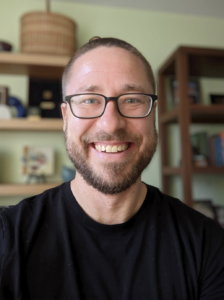
Jeffrey Leek
Jeffrey T. Leek is a professor of Biostatistics and Oncology at the Johns Hopkins Bloomberg School of Public Health and co-director of the Johns Hopkins Data Science Lab. He has a bachelor’s degree in mathematics from Utah State University and an MS and PhD in Biostatistics from the University of Washington. His group develops statistical methods, software, data resources, and data analyses that help people make sense of massive-scale genomic and biomedical data. As the co-director of the Johns Hopkins Data Science Lab, he has helped to develop massive online open programs that have enrolled more than 8 million individuals and partnered with community-based non-profits to use data science education for economic and public health development.
The Presidents’ award citation recognized Jeffrey Leek “for influential work addressing high-dimensional data; for development of empirical tools for data science as a science with applications to meta-research, reproducibility, and replicability; for scaling (bio)statistics-centered data science education to millions of people worldwide; and for leveraging data science tools, educational technologies, and community partnerships to create economic opportunities in under-served communities.”
The COPSS Secretary/Treasurer, Judy Huixia Wang, interviewed Jeffrey Leek:
What was your first reaction to winning the prestigious COPSS Presidents’ Award?
I was stunned and delighted to find out I had won the COPSS Presidents’ Award. I’ve been such an admirer of many of the past winners and it feels a little surreal to be selected. I’m incredibly grateful to my students, postdocs, collaborators, colleagues, and mentors who have made this possible and I’m just really excited to be able to share the news with them.
Which part of your job do you like the most?
My absolute favorite part of my job is the brainstorming phase of any new project, especially with a group of people with different backgrounds, experience, and ideas. The combination of learning and excitement that happens during that part of a project is the best. I’ve been very lucky to work with smart, fun, and nice people – it’s a combination that makes it easy to want to take on new challenges.
What advice would you give to young people who are entering the profession as PhD students and assistant professors at this time?
I always feel a bit uncomfortable giving advice; it’s usually worth what you pay for it… I will say that three pieces of advice I received from mentors have served me really well: find people you like to work with and prioritize who you are working with as much as what you are working on; work on things you care about, even if it isn’t typical or what you think others expect; and try to find places to work where the funding aligns with what you like or want to do. I’m really impressed and excited by the things I see junior faculty, postdocs, and students doing on Twitter and I’m particularly impressed at the wide variety of different ways you can define “being a statistician” —the big tent model of statistics is awesome.
Who are your most significant mentors? How did(or do) they impact your career?
I have had many amazing mentors throughout my career! Jim Powell at Utah State University gave me my first undergraduate research experience, took me to my first conference, and encouraged my love of research. John Storey, my PhD advisor, was an amazing mentor — I was one of his early students and I really benefited from a ton of close interaction and support. He introduced me to genomics, spent tons of time helping me learn to write, taught me a framework for thinking about problems I still use, and introduced me to his collaborators and network. I really wouldn’t have been able to do any of this without his early support. Giovanni Parmigiani got me a job near my wife, introduced me to the Hopkins crowd, and broadened my thinking about Biostatistics beyond genomics. Finally, Rafa Irizarry, my first faculty mentor, basically showed me all the ropes as I was getting started, helped me get connected to the broader biostatistics community, and has been a sounding board and friend for years.
There are a bunch more as well. I feel like anyone who has had the good fortune to end up in a successful place relies on a whole community of mentors, friends, and colleagues to make it possible.
Why were you drawn to biostatistics and data science?
Like many graduate students in (bio)statistics when I started my career I thought, “I like math and I want to find a way to help people.” I love that statistics lets me work on problems I feel are meaningful for helping people.
Is there anything else you would like to share about our profession?
That one of the best parts of statistics is the community. I really have loved being a part of the statistical community — it’s very broad and has all sorts of fun niches to find a group of people you can work with. For me, that happened on social media, through Twitter. Chris Volinsky got me on there at JSM 11 years ago, and it has helped me connect to so many incredible people around the world who care about statistics like I do.
Whether it’s through social media, ASA committees, networking events, or conferences, I would definitely say that one of the best parts of being a statistician is all the fun people I get to work with.
Finally, what are your hobbies and interests beyond statistics?
I love to run, hike, and — when I have the time — to cook and pickle peppers. I have two highly energetic sons and also get super excited to take them out mountain biking, swimming, and coaching their sports teams. I also have been learning from them and am improving my Minecraft Dungeons level!